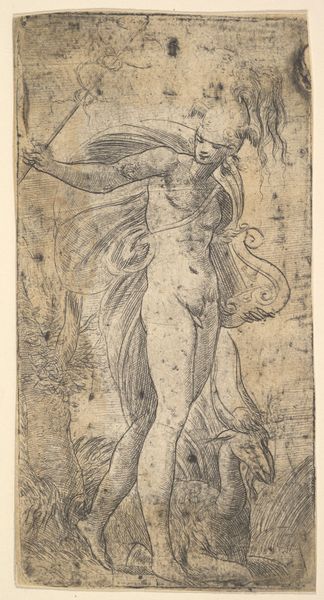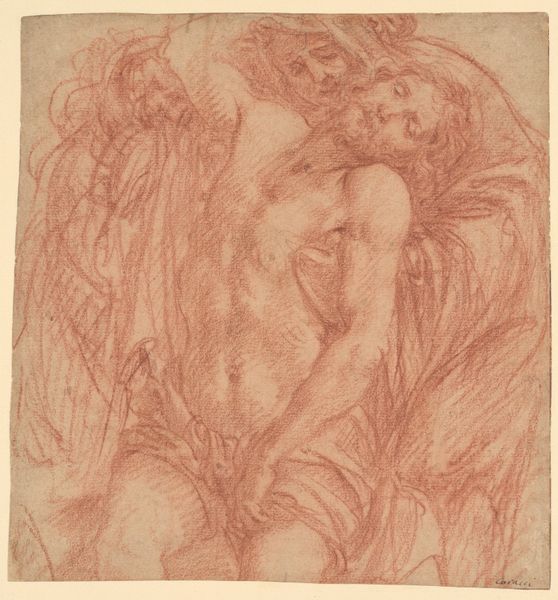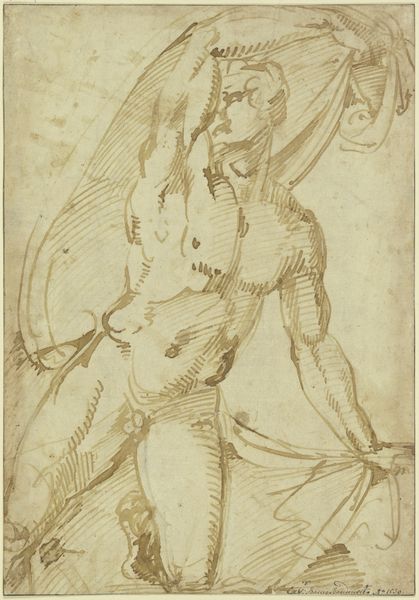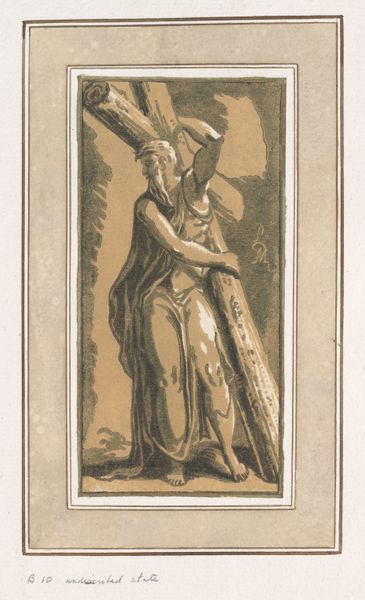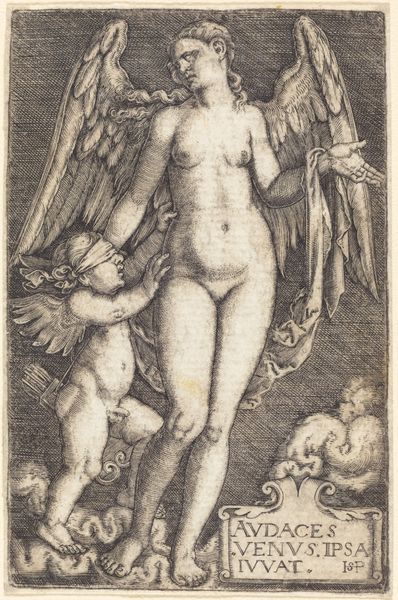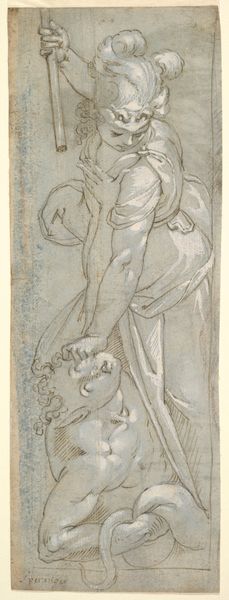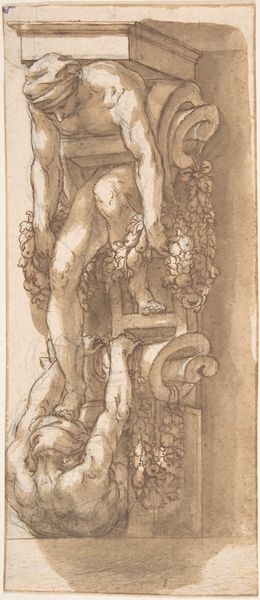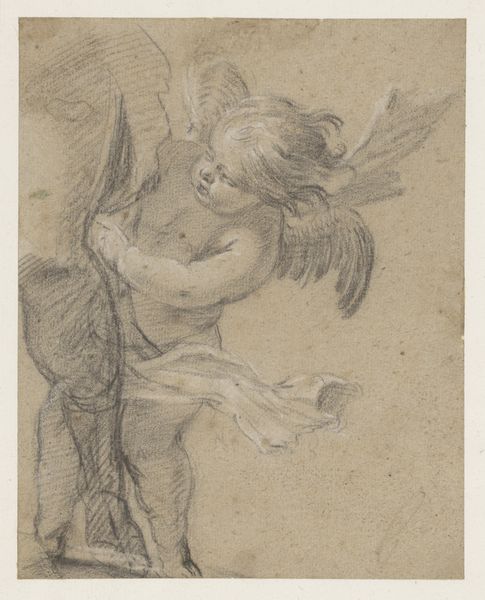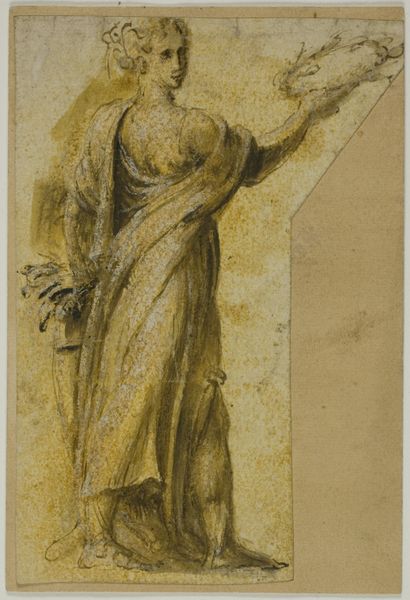
drawing, gouache, ink, charcoal
#
portrait
#
drawing
#
high-renaissance
#
gouache
#
charcoal drawing
#
figuration
#
form
#
ink
#
charcoal
#
charcoal
#
nude
Copyright: Public Domain
Editor: This is "Standing Male Nude, Seen from the Back" by Parmigianino, circa 1525, rendered in charcoal, ink and gouache. The figure is powerful but seems unfinished, with these almost frantic lines creating the form. What stands out to you? Curator: I’m struck by the process of its making. It appears to be a study, doesn't it? A preparation. Think about the labor involved in creating this life-size figure, likely meant to inform another work. How was it commissioned? Was the nude figure meant to aggrandize, eroticize, or simply act as raw material for another piece? Editor: It's interesting to think about the “raw material” aspect, framing the male form like just another object. Curator: Exactly. And who had access to this labor, both the artist's and the model's? Was it produced for a patron? Was it meant to decorate an altar? How would it be viewed in light of emerging discussions of anatomy during the Renaissance and the evolving status of artmaking? Editor: So you're saying understanding its value means understanding the labor, materials and social systems intertwined with its creation? Curator: Precisely. High Renaissance drawings were often collaborative endeavors. And if we look closely at the laid paper, can we perhaps discover further truths about workshop practices during the period? We have to move away from viewing art as only aesthetic refinement to understand its meaning. Editor: I never thought of the social context surrounding even the initial sketch playing such an integral role. I am seeing it differently. Thank you. Curator: Art is about the artist's intention, certainly, but also about material conditions, reception, and a complex web of patronage.
Comments
No comments
Be the first to comment and join the conversation on the ultimate creative platform.

